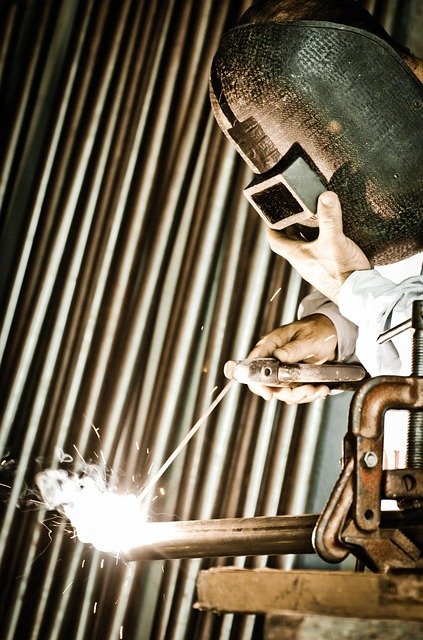Choosing the Right Welding Tools For Your Next Project
Selecting appropriate welding equipment is critical to the success of any welding project, whether you're a professional welder or an enthusiastic hobbyist. The right welding tools not only ensure quality results but also provide safety and efficiency during operation. With numerous options available in the market, from MIG and TIG to stick welders, understanding the basics of welding equipment selection can save you time, money, and frustration.

Understanding Different Types of Welding Machines
Welding machines come in various types, each designed for specific applications and materials. MIG (Metal Inert Gas) welders are popular for beginners due to their ease of use and versatility. They work well with steel, aluminum, and stainless steel. TIG (Tungsten Inert Gas) welders offer precision and are ideal for detailed work on thinner metals, producing clean, high-quality welds. Stick welders (SMAW - Shielded Metal Arc Welding) are robust machines suitable for outdoor conditions and thicker materials. Finally, flux-cored welders work similarly to MIG welders but don’t require shielding gas, making them perfect for outdoor applications.
Essential Welding Supplies for Different Projects
Beyond the welding machine itself, several welding supplies are necessary for a complete setup. Welding helmets with auto-darkening features protect your eyes and face from harmful UV rays and sparks. Welding gloves, made from heat-resistant materials, shield your hands during operation. Electrode holders for stick welding, torch accessories for TIG welding, and wire feeders for MIG welding are project-specific tools that enhance performance. Don’t forget about clamps and magnets for securing workpieces, and grinding wheels for surface preparation and finishing touches. The quality of these welding supplies directly impacts both safety and the final result of your project.
How to Match Welding Equipment to Material Types
Selecting welding equipment based on the material you’re working with is crucial for achieving strong, durable welds. For mild steel, most welding processes work well, with MIG and stick welding being particularly efficient. Aluminum requires specialized equipment – typically TIG welders or MIG welders with spool guns – due to its lower melting point and higher thermal conductivity. Stainless steel benefits from TIG welding for precision work or MIG welding with appropriate gas mixtures. Cast iron presents unique challenges, often requiring nickel rods and careful preheating. Before purchasing welding tools, always consider the primary materials you’ll be working with to ensure compatibility.
Power Requirements and Portability Considerations
Welding machines vary significantly in their power requirements and mobility features. Home workshops typically use 110V machines, which plug into standard outlets but have limited power output suitable for thinner materials. Professional settings often require 220V machines, offering more power for thicker metals but demanding specialized electrical installations. Inverter-based welding tools have revolutionized portability, providing high-performance welding in compact, lightweight packages. When choosing welding equipment, evaluate your workspace’s electrical capacity and consider whether you’ll need to transport your welding tools between locations. Dual-voltage machines offer flexibility, operating on either 110V or 220V systems with simple adjustments.
Key Features to Look for in Quality Welding Tools
The durability and performance of welding tools depend largely on their build quality and features. Look for welding machines with adequate duty cycle ratings – this percentage indicates how long the machine can operate continuously within a 10-minute period before needing to cool down. Higher-end welding equipment often includes thermal overload protection, preventing damage during extended use. Adjustable settings for amperage, voltage, and wire feed speed allow for precise control over the welding process. Digital displays make these adjustments more intuitive, particularly for beginners. For MIG and flux-cored welders, smooth wire feeding mechanisms prevent frustrating jams during operation. Quality welding helmets should offer adjustable darkness settings and quick reaction times.
Welding Equipment Price Comparison and Value Assessment
Investing in welding tools requires careful consideration of both upfront costs and long-term value. Entry-level welding machines suitable for hobbyists range from $200 to $500, while professional-grade equipment can cost anywhere from $1,000 to $5,000 or more. Below is a comparison of popular welding machines across different categories:
| Welding Machine Type | Brand Example | Price Range | Best For |
|---|---|---|---|
| Entry-level MIG | Hobart Handler 140 | $500-600 | Beginners, light projects |
| Mid-range TIG | Miller Diversion 180 | $1,500-2,000 | Detail work, precision |
| Professional Multi-process | Lincoln Electric Power MIG 210 MP | $1,200-1,400 | Versatility, various materials |
| Industrial Stick Welder | ESAB Rebel EMP 215ic | $1,800-2,200 | Heavy-duty outdoor work |
| Budget Flux-Cored | Forney Easy Weld 299 | $200-300 | DIY, occasional use |
Prices, rates, or cost estimates mentioned in this article are based on the latest available information but may change over time. Independent research is advised before making financial decisions.
When evaluating welding equipment cost, consider factors beyond the initial purchase price. Consumables like electrodes, welding wire, and shielding gas represent ongoing expenses. Higher-quality welding tools typically offer better energy efficiency, reducing operational costs over time. Additionally, more expensive models often include longer warranties and better customer support, potentially saving on repair and replacement costs.
Safety Equipment and Accessories for Welding Projects
Safety should never be compromised when selecting welding tools. A properly rated welding helmet with auto-darkening features is essential for eye and face protection, with prices ranging from $50 for basic models to $300+ for professional-grade options. Heat-resistant welding gloves ($15-50), flame-resistant clothing ($50-200), and proper ventilation systems are non-negotiable safety requirements. Additional welding supplies like fire extinguishers, welding blankets to protect surrounding areas from sparks, and appropriate footwear complete the safety setup. Remember that quality safety equipment is an investment in your health and wellbeing, not an area to cut corners when assembling your welding tools collection.




